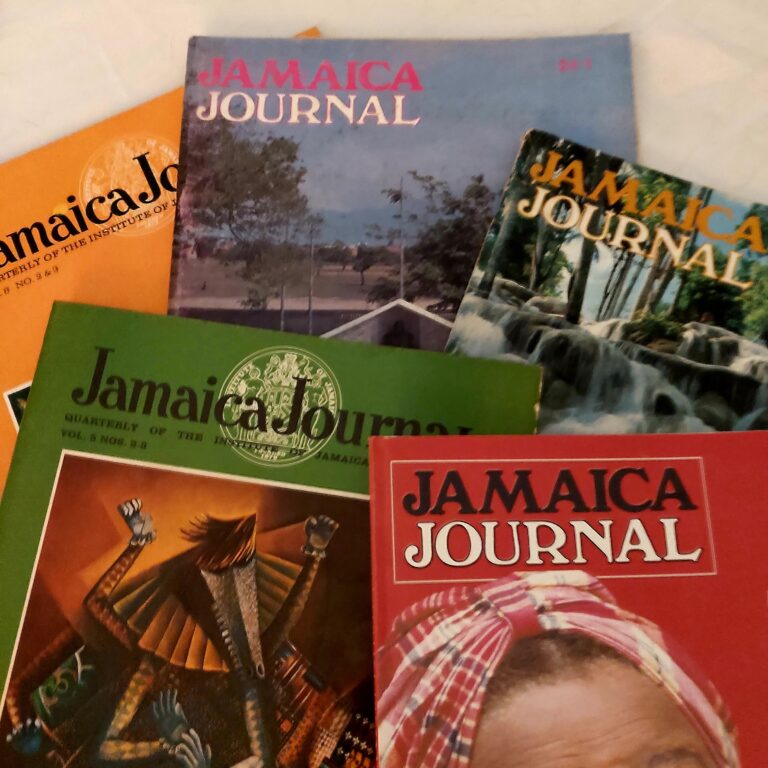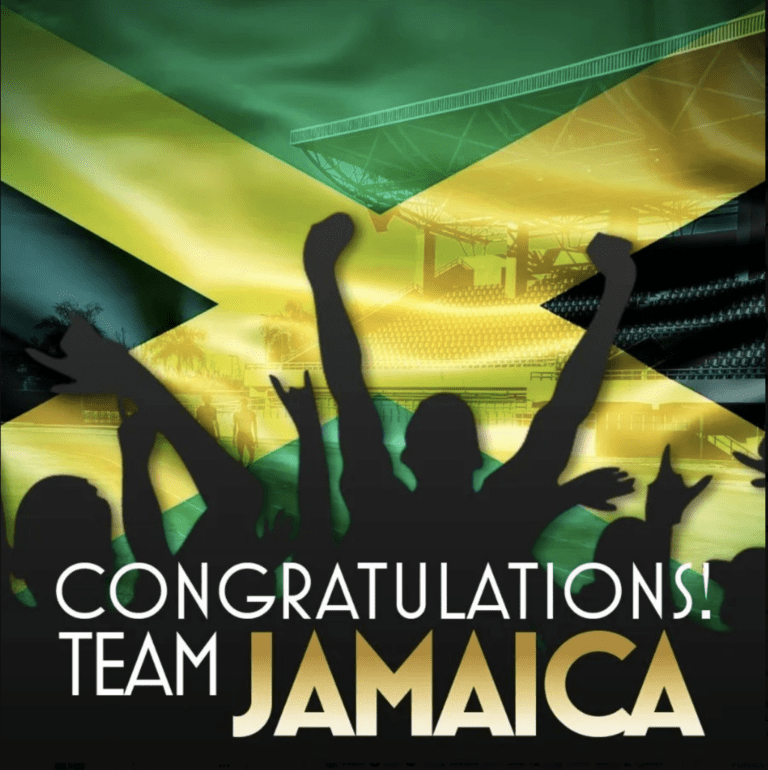Hybridization at CreativSpace

Hybridization, which opened on 12 February, is the inaugural exhibition at CreativSpace’s new location in downtown Kingston, on the corner of Laws street and Mark Lane, just off Parade. CreativSpace, an exhibition and workspace for creatives which is available for rental, was previously located in an office complex on the corner of Windsor Avenue and Old Hope Road near New Kingston. The new space is much larger, and consists of two connected spaces, with a larger, open gallery at the front and smaller gallery, which can be used for special projects, at the back. It is far more suitable for art exhibitions than the previous space, which never quite managed to shake its “office vibe”. There are a few things that could still be added, such as climate control and proper gallery lighting, and the steep and uneven access staircase is a challenge for persons with mobility issues. The new space is, however, a vast improvement over the previous location and, at present, is the only private art gallery space that actually looks and feels like one in Jamaica. It is exactly what is needed in downtown Kingston at this time.
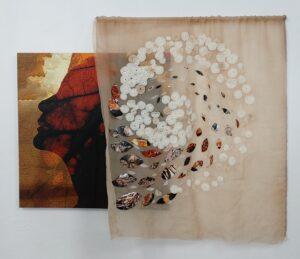
Hybridization was curated by Blaqmango, a curatorial team consisting of the textile and fibre artist Katrina Coombs and the art historian Winston Campbell. It applies the concept of hybridization which, as the main wall text outlines, has broad cultural significance in the postcolonial Americas, to artistic collaboration and the generative tensions that arise from having to share parts or all of the artistic creation process. Ten artists were paired to produce work for the exhibition, with each pair involving an artist who works in textile and fibre with one who works in other media: Kereina Chang-Fatt thus collaborated with the photographer Donnette Zacca; Ammoy Smith with the ceramist Ramon Christie; Margaret Stanley with the jeweller Carol Campbell; Laura Lee Jones with the sculptor and installation artist Paula Daley; and Katrina Coombs herself with the sculptor Stefan Clarke.
Hybridization is part of a series of exhibitions curated by the Blaqmango team that has sought to advance the conversation on textile and fibre art, of which Fiberactive Germination was the first in 2021 and Fiberscape the second in 2022. Both were shown at the original CreativSpace location and involved several of the same artists. Hybridization adds to this by raising questions about the nature of artistic creation.
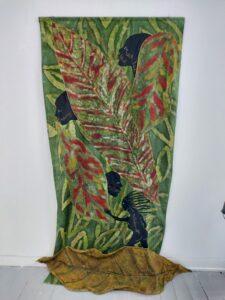
Culturally, we are conditioned to regard artistic creation as an individual act. Although, in reality, the production of art almost always involves some level of collaboration (for instance through the use of materials or technical processes contributed by third parties) but collaborative art works remain rare in the contemporary context. Each artistic medium has its own technical processes that do not necessarily translate fluently to other media. It is notable that some of the works in Hybridization are credited equally to both artists while the labels of others identify one artist as the lead and the other as a contributor. In some, it is clear that the secondary artist merely made an intervention into a complete work, even though some of these have a significant impact, while in others, the creative process and credit was more fully shared. In each instance, however, the identities of the participating artists are still clearly visible, and most of the resulting works are best described as artistic dialogues rather than fully integrated collaborations.
As is to be expected, the results of the collaborations in Hybridization are mixed. Some, such as Alive in Spirit, by Donnette Zacca with Kereina Chang Fatt, and Transformation (Change) by Margaret Stanley with Carol Campbell, are quite beautiful, and the juxtaposition of media, and tensions between two-dimensional images and three-dimensional objects add a sensory richness and surreal quality to the works, unearthing new meanings in the process. Other collaborative works are less resolved, and even awkward, and suggest that more attention should have been paid to the technical and production aspects of the collaborations.
A certain affinity is needed to make an artistic collaboration possible, but the most interesting ones in Hybridization are those where there are also strong conceptual and formal frictions. This is perhaps most evident in the collaborations between Katrina Coombs and Stefan Clarke, where the colourful fibre constructions of the former and the monochromatic welded metal structures of the latter both echo and challenge each other. Both are preoccupied with textures, which are not unsimilar, visually, but contrast strongly on a material and metaphorical level: the soft, pliable textile elements versus the hard, spiky and even aggressive metal forms. Both artists are preoccupied with the female body, but Clarke’s depictions of the female body invoke bondage and violence, and male fantasy, Coombs’ address trauma and healing from a female perspective. Gender dynamics are present in all the collaborations, and, in any case, comes with the territory in textile and fibre art, and the exhibition is dominated by women artist, with only two male artists participating. However, none of the collaborations generate the sort of gendered tensions that are evident in the Coombs-Clarke collaborations, which pointedly juxtaposes Clarke’s unapologetic masculinist outlook with Coombs’ feminist interventions, despite the visual and material integration of their projects.
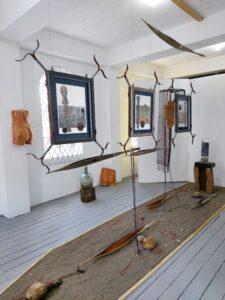
The most ambitious, and perhaps closest collaboration in the exhibition, is the large installation Passage: Break in Case of Emergency by Paula Daley and Laura Lee Jones which occupies the smaller gallery in the back. The installation, which combines collage, found natural and manmade objects, and fabricated elements in metal and fibre, takes inspiration from the words of the former slave Esteban Montejo in the Cuban writer Miguel Barnett’s Autobiography of a Runaway Slave (1966). It particularly reflects on the question of “what makes a slave,” as this goes beyond the person’s legal status, and what are the long-term social and cultural implications of this construct, particularly in terms of the problematic ideas about Black masculinity that it has produced. I attended the artists’ talk on this installation and they spoke frankly and thoughtfully about their project, and particularly, on how they shared the conceptual and material development of the work.
It appears, however, that there was a third, unacknowledged, artist in their collaboration, namely the late David Boxer who produced many collages, assemblages and installations on very similar themes and frequently used the title, Passage. While image sources such as colonial era landscape prints and the Brookes slave ship diagram and other references to the Middle Passage and the plantation have been used by quite a few African Diaspora artists in their visual critiques of slavery and colonialism, Boxer had a particular, highly recognizable way of using them. I am, for instance, thinking of his Memories of Colonization collages of 1995, in which he superimposed anatomical drawings, traditional African carvings, and cellular forms, along with other collage elements, on reproductions of JB Kidd prints from the 1830s of the Jamaican landscape. Boxer’s approach is closely followed, to the point of being almost replicated, in the collages that are suspended in the middle of the Passage: Break in Case of Emergency installation (although James Hakewill prints are used in this instance). Boxer’s influence has been evident in Paula Daley’s work before, which is not as such a problem, but the collages are just too close and their appropriation of Boxer’s imagery, concept and general aesthetic arguably goes beyond legitimate influence. At the very least, the influence of his work in this project ought to have been credited.
These concerns notwithstanding, Hybridization is an enjoyable and thought-provoking exhibition. The project was supported by a grant from the CHASE fund and the exhibition continues at CreativSpace until the end of March. The exhibition is accompanied by a series of public talks by the artists involved in the collaborations, which are held on Sundays at 1 pm. The exhibition is open during the scheduled talks and by appointment (dblaqmango@gmail.com or 876-264-8872).
Given the immense potential of the space, I look forward to what else the new CreativSpace gallery will yield and whether its location in the heart of Downtown Kingston will be economically sustainable. It could well be a game changer in the local art scene.
Dr Veerle Poupeye is an art historian specialized in art from the Caribbean. She works as an independent curator, writer, researcher, and cultural consultant. The second, revised and expanded edition of her best-known book “Caribbean Art” was recently published in the World of Art series of Thames and Hudson. Her personal blog can be found at veerlepoupeye.com.





